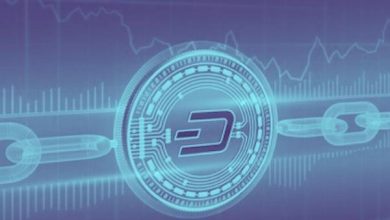
Understanding the Monetary Policy of Ethereum: On “Minimum Necessary Issuance”
If you’re reading this article, chances are you have more than just a passing knowledge of the cryptocurrency ecosystem.
Accordingly, you’d know Bitcoin and Ethereum are currently the most popular and used cryptocurrency platforms, and no other projects are even close to climbing atop the cryptoeconomy’s hill for now.

But Bitcoin is typically far better understood than Ethereum, and understandably so. It’s been around for longer, has received more popular attention, and is more conservative and narrow in design — all dynamics that have contributed to the original cryptocurrency project becoming well-defined and thus more digestible, even to non-technical newcomers to the space.
On the other hand, Ethereum is still not well understood by many. For example, consider the matter of monetary supply.
Let’s Talk Issuance
Casually dropping references to halvenings, deflation, and “there will only ever be 21 million bitcoin” have become second nature to many Bitcoiners. Yet even some Ethereum fans struggle to articulate precisely how ether (ETH) issuance works.
Consider comments recently made by Ethereum stakeholder Aftab “DC Investor” Hossain in future-minded investment theses he wrote for Bitcoin and Ethereum, i.e. what could work for or against either project’s value going forward.
Therein, Hossain argued Bitcoin enjoyed an easily digestible “fixed supply narrative” and was “already understood by much of the initially addressable investing populace,” a la digital gold, but that there was “poor understanding around ETH supply” since the project did not have have a supply “hardcap” and the “market doesn’t understand planned low issuance / fee burn under PoS,” or the smart contract platform’s coming Proof-of-Stake shift.
Since Ethereum is the currently second most popular blockchain and cryptocurrency project, it seems worthwhile to further address this deficit of understanding around supply so people can better come to their own conclusions and articulate the matter for themselves.
“Minimum Necessary Issuance”
As educational site EthHub succinctly explains, the Ethereum blockchain avoids an arbitrarily fixed supply system:
“Ethereum does not have a fixed supply because a fixed supply would also require a fixed security budget for the Ethereum network. Rather than arbitrarily fix Ethereum’s security, Ethereum’s monetary policy is best described as ‘minimum issuance to secure the network.’”
With that said, the current block reward on Ethereum — the amount of ether paid out per block — is 2 ETH, which presently makes the project’s annual issuance rate 4.5 percent of its total supply. Of course, this is the amount being paid out while Ethereum is still relying on Proof-of-Work (PoW) mining.
Next year, the smart contracts platform is set to begin Phase 0 of its multi-phase Serenity upgrade, which will see “Ethereum 2.0” steadily rolled out. When Phase 2 of that upgrade starts and PoW dwindles for good, there will be a further considerable drop in ether issuance, as the following EthHub forecast graph shows.

Note how ETH issuance is projected to considerably drop off in 2021. Image via EthHub
It all depends on the amount of ETH that gets staked in Ethereum 2.0.
For instance, if 3 million ETH are involved in validating, then it is projected that the network’s max annual issuance would be capped at 0.30 percent, or some 313,000 ether. If 10 million ETH are involved, the annual issuance would be no more than 0.54 percent, or around 572,000 ether.
Other Factors? Slashed ETH, EIP-1559, and More
Ethereum’s future monetary issuance could be further affected by several factors, as Set Protocol’s Anthony Sassano recently noted.
10mil ETH staked gives a yearly issuance rate of 0.54%.
Burning 0.35% of the supply each year brings the effective issuance rate down to 0.19%.
Then throw in ETH:
-Lost
-Slashed
-Locked in DeFi
-Paying state rentSupply cap? Where we’re going we don’t need a supply cap 🚀 https://t.co/etdtEnVh5x
— Anthony Sassano (@sassal0x) September 17, 2019
For one, there is Ethereum Improvement Proposal (EIP) 1559, which would start burning a portion of every transaction fee on Ethereum.
If ever implemented into the platform, this EIP would presumably lessen the annual ETH issuance rate considerably, on top of the already lowered issuance in Ethereum 2.0.


eToro Risk Warning: 75% of retail investor accounts lose money when trading CFDs with this provider. You should consider whether you can afford to take the high risk of losing your money.
You have Successfully Subscribed!
Source: blockonomi.com
View original post






